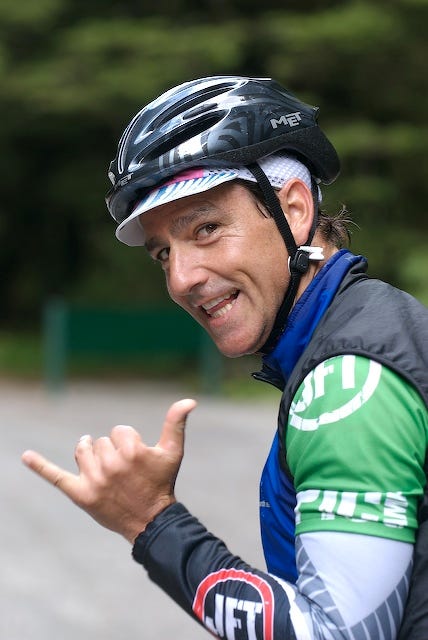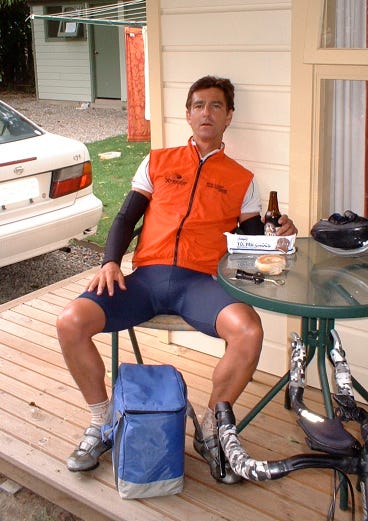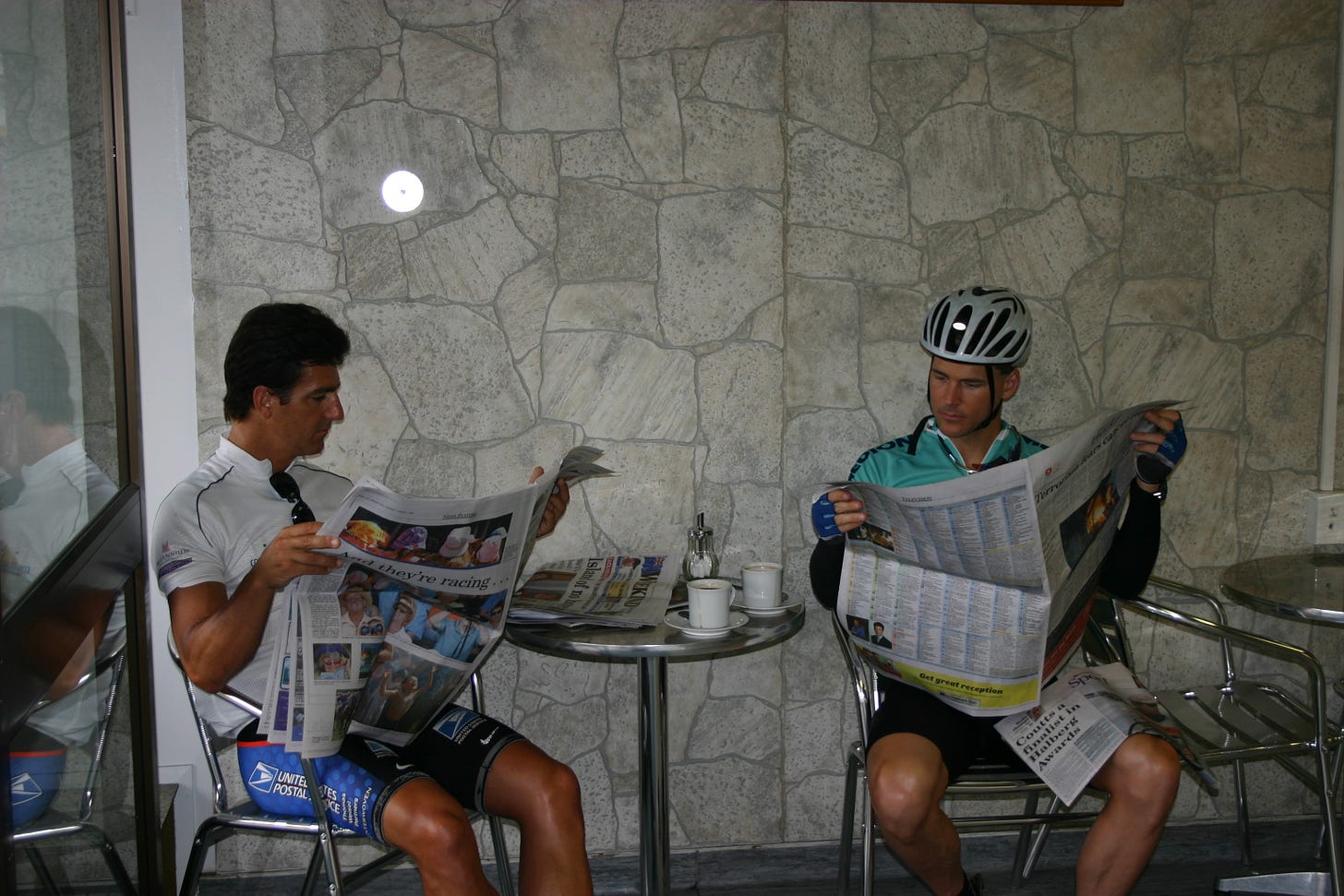Scott Molina refuses to take credit for my athletic success. I think he’s forgotten how clueless I was.
Scott had a simple approach, outwork the opposition.
There are five key aspects of his approach:
Aerobic Threshold Endurance
Strength
Race Skills
Go Very Fast, Sometimes
Aim For 95%
Aerobic Threshold
Scott did a lot in the 25 years before he meet me.
Then we did a lot more, together.
The first step in my elite development was building the capacity to tolerate 30-35 hour training weeks.
Week-after-week
Month-after-month
Season-after-season
The only way to pull that off is by learning where your aerobic threshold lies.
It is impossible to use an intensity-focused protocol for a series of >100-hour training months.
…and if you want to get good then you’re looking at a minimum of 25 of those months to see what might be possible.
Scott’s view => it takes an athlete THOUSANDS of hours of apprenticeship BEFORE they have enough information to decide if it makes sense to get serious.
Strength
The next change Scott made to my program was teaching me how to elevate my heart rate:
Alone
TT Position
On The Flats
After Many Hours of Exercise
I still teach Scott's approach. It works.
Scott encouraged me to develop strength with intention.
To Increase Race Pace
To Reduce Injuries
To Enhance The Ability To Do Work
It is essential to understand this point. Don’t simply make yourself tired by jacking up your heart rate or smashing yourself in the gym.
Think about the type of fatigue that’s most useful.
Write It Down
Create Your Week
Repeat Your Week
I’ll be explaining the components in detail:
Medley, Paddle and Band Swimming
Hilly Runs
Traditional Strength, Dryland & Plyometrics
The bullets above are where I placed the bulk of my “Intensity”.
Week In. Week Out.
Another one of Scott’s students, Cameron Brown, coined a favorite phase of mine…
You Gotta Back It Up
Being strong, helps you back it up.
What It Takes
Three Things I Want You To Remember:
Everything you need to become a great athlete is captured by the concepts of Aerobic Threshold & Strength.
It covers 95% of the training you need to be doing.
The other 5% is subject to endless debate and often gets in the way of what makes an athlete better. Focused Work.
For five years, October to February, I lived in New Zealand.
Scott and I would train together, most days.
We’d race local
We’d repeat-the-week
It worked for us, and it will work for you.
Race Skills

Scott won over 100 elite races, including the 1988 Ironman World Championship in Hawaii.
About that day he told me…
If that race was one mile longer, I wouldn’t have finished
Race skills lie beyond fitness.
Our aerobic endurance sets the platform
Our strength helps us deliver performance on race day
There are lessons, learned in competition that aren’t available elsewhere.
Racing is a skill that needs to be practiced, by racing.
No way around it.
Go Very Fast, Sometimes
My physiology is predominantly slow twitch and I started athletics late in life. As a result, I had many self-imposed limits with respect to going fast.
Teaching me to race, Scott had his work cut out for him.
His approach was vintage-Molina… keep kicking my ass until I got sick of it.
I'll share a story to illustrate.
We were in the middle of the South Island, on the second day of our first Epic Camp.1 Scott had been crushing me in sprints for a couple years at this point.
There was a KOM at the top of Lindis Pass and I’d decided I was going to die before I let Molina beat me again.
From my diary
We had another fantastic start to the day with light winds and cool temperatures. Our ride started alongside a canal and the flat was a nice way to ease our legs into the day. We took our first break at Lake Pukaki, a man-made lake that's backed by Mount Cook. Following our break, John stepped to the front and took the first of several massive pulls. He's getting ready for IMNZ and looks set for a strong race.
Our only sprint of the day was just before lunch and, yet again, Macca (Chris McDonald) took it out. However, Molina (back from the dead) didn't make it easy for him and Big Mac had to work for his three points. I snuck across in third.
Following lunch, we had 20K into the wind before we hit the only major climb of the day. Mauricio had been riding with us from the start and kicked the pace up to tempo as the grade increased. I had a go and soon it was Molina, Mauricio and me. I'm not sure what go into Scott, but he was hammering up the hill. I was hanging on for dear life and praying that he'd ease off just a little. The pace slowed a fraction, and I went for a max effort sprint. It was just enough, but man-o-man did it hurt.
I was pretty shelled after the climb and simply hung on to the guys. We had a tailwind until we turned for the final 30K of the day. John took the pace up and we strung out. I was in pain. Molina came through and helped with the work. Following Molina taking a pull, I dug deep and started to pitch in. We worked ourselves ragged and made it into Wanaka in good time.
At the top of the pass, I have a memory of hearing Molina laughing. I guess he’d never seen me ride that hard.
If you do big training then take notes, daily.
Save everything.
You’re going to forget both the amount of work you did, and the great stories you share with your training partners.
Here’s a story Scott told us on the day we rode over Lindis Pass.
Scott’s Voice:
It concerns a young Chris Miller, who was a protege of mine in the early days.
Chris and I did one of the first Nice triathlons in '82 back when most running shorts had the same nylon material for the outer layer and the inner layer. No poly-cotton back then.
Anyway, he's running along and at about the 6-mile mark his little member starts to get treated rather badly by the nylon. But he determinedly soldiers on until about the 15-mile mark when the pain starts to become unbearable. He stops to inspect the damage and quickly decides that all of his post-race plans will have to be changed, at the very least.
After a couple more miles he tries to wrap it in a paper towel he grabs from an aid station, but it quickly becomes soggy and gets rubbed off. So, he decides that rather than risk further damage he'll just cover it with his hand in his shorts to the finish.
Needless to say, he received roaring applause from the thousands lining the last kilometer.
Good humor goes a long way when training big.
About going big…
Aim For 95%
If you base your training on Scott’s principles of Aerobic Threshold Endurance and Focused Strength then you will be able to do a lot of work, safely.
I’ll let Scott tell it to you directly:
Most people ought to approach their training plan using what I call my 95% rule.
If you aim for 95% of what you think you can potentially achieve, then there’s about a 95% chance you’ll get there.
If you aim for 100% then there’s likely a 100% chance you won’t even get close.
Tips For Young Athletes
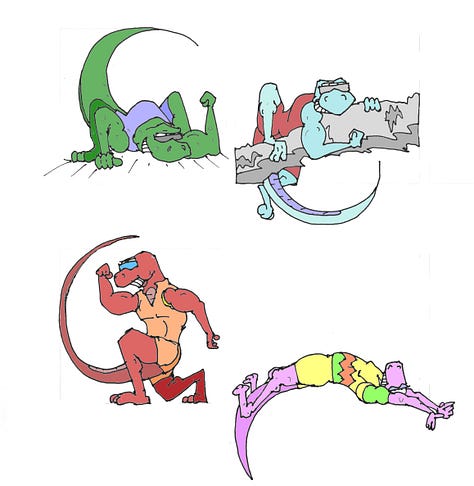
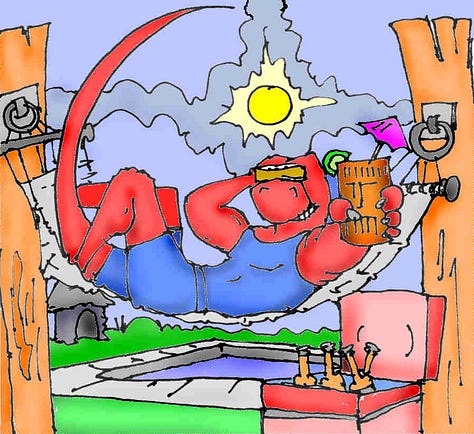
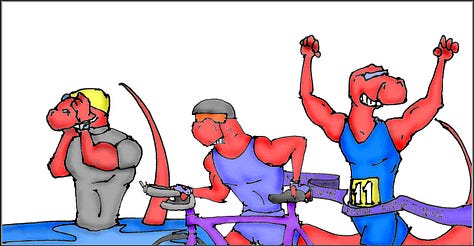
I asked Scott for ideas that would have helped his younger self.
Real breaks from training, at least 2x per year. Either 2 weeks completely off, or 3 weeks of super light training with no travel.
Eat better! My diet was absolute crap until I was 26 or 27.
Wear sunscreen. The Desert Lizard Tanning and Triathlon Club was born out my comedic notion. I was making a bit of a joke really. Even the most powerful force in our solar system couldn’t harm me, and it gave me power.
Drink less booze.
We’re going to be hearing from Scott, plenty, in the chapters to come.
Back To Table of Contents
Scott and I founded a business called Epic Camp. Our friend, John Newsom, still operates the business.




